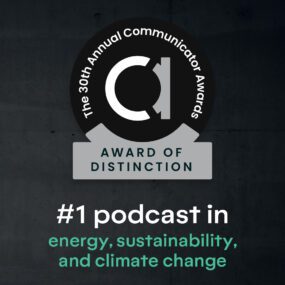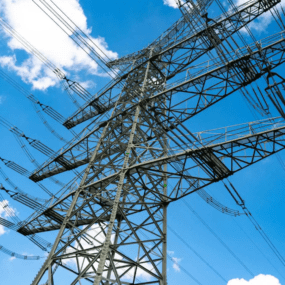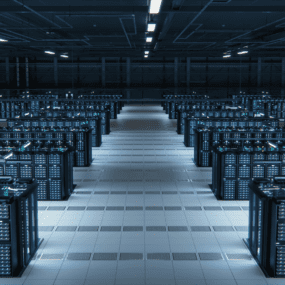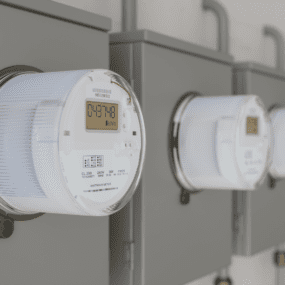Geothermal heating and cooling is gaining momentum
Dandelion CEO Dan Yates talks breakthroughs in installation economics — and why geothermal could thrive in today’s political environment.

Dandelion CEO Dan Yates talks breakthroughs in installation economics — and why geothermal could thrive in today’s political environment.

Sign up for our newsletter
Stay in the loop with all things GridX and beyond.
Geothermal heat pumps are ready for their United States breakthrough. Despite years of sluggish adoption in American homes, geothermal heating and cooling technology could be one of the few clean energy solutions to thrive regardless of shifting political winds, according to Dan Yates, CEO of Dandelion Energy.
In a recent interview on the With Great Power podcast, Yates detailed geothermal heat pumps’ efficiency advantages and surprising economics — and the company’s aggressive strategy to capture an expanding U.S. market.
Unlike air source heat pumps, which extract heat from frigid outside air during winter, geothermal (also known as ground source) heat pumps tap into the constant high temperatures found below ground.
“As soon as you get about eight feet down, you have no fluctuations in earth temperature,” Yates explained. “This is not hot earth. This is not the geothermal in Iceland or Yellowstone that you use to make a power plant. This is lukewarm geothermal as I call it.”
The ground maintains a steady temperature of about 60 degrees Fahrenheit, which provides significant efficiency advantages compared to air-based systems trying to work in extreme temperatures.
“Sixty degrees is a heck of a lot warmer than five degrees outside in the winter, and it’s a heck of a lot cooler than 90 degrees in the summer,” said Yates. “What you end up with is a system that’s about twice as efficient overall and about four times as efficient on the peak days.”
Dandelion’s approach involves drilling a 500-foot-deep, six-inch-diameter well. Two pipes are buried and connected at the bottom of the well, forming a loop. The pipes are then filled with an antifreeze water solution that is pumped down on one side of the pipes and comes back up the other. “We can suck the heat out of that water and pump it back into the earth where it gets warmed up in the winter, and we can do the opposite in the summer,” said Yates.
Despite the technology’s advantages, though, only about one percent of U.S. homes currently use geothermal heat pumps. However, according to Department of Energy projections, 7 million homes have the potential to adopt these systems over the next decade — a market opportunity Yates is positioning Dandelion to capture.
“Our primary target market are the million homes that are being built a year in the U.S.,” Yates noted. “Most of those homes could be geothermal homes.”
Stakeholders in an evolving market
The economics are becoming increasingly favorable, particularly for new construction. Yates said retrofitting an existing home with geothermal typically costs around $45,000 before incentives, which translates to an out-of-pocket cost of roughly $20,000 to $25,000 for the customer.
“The pre-incentive costs can be on average something closer to like $19,000 because there’s so many scale advantages to doing a new home,” Yates said. And after incentives, the economics are even better. “We have now signed some large deals…where our builder partners are actually spending less money putting in geothermal than they would’ve putting in either natural gas or air source.”
Yates also addressed potential impacts from the changing political landscape on Dandelion’s business. Despite shifts in federal energy policies under the second Trump administration, he expressed confidence in continued support for geothermal energy, regardless of the type.
“There’s actually a lot..of enthusiasm around geothermal and it’s primarily focused around the other kind of geothermal, which is power plant, baseload energy generation,” said Yates. “But it extends to the ground source heat pump technology.”
That said, Yates acknowledged one policy concern: geothermal incentives are currently tied to the same tax provisions that support wind and solar. “So there is a baby out with the bathwater risk,” Yates explained. His team is actively working to educate policymakers on these distinctions, though he emphasized there’s no targeted opposition to geothermal technology itself.
Beyond homeowners, utilities represent another important stakeholder and potential partner for companies like Dandelion. Yates sees opportunities for innovative ownership models where utilities could own the in-ground infrastructure.
“We don’t actually think it makes sense in the long-term for homeowners to own these loops. They last a hundred years. No homeowner values the years 22 to 100,” Yates explained. “It’s a classic example of low maintenance infrastructure that is sort of purpose-built for utility ownership or state green bank ownership.”
Looking ahead, Yates, who previously founded and sold energy software company Opower, is driven by a commitment to climate solutions.
“I’m a terrible loser,” he said when asked about his superpower. “I really think geothermal really deserves to be a big part of the solution, and I’m just doggedly going to go after making sure that that happens.”
For the full conversation with Dan Yates, listen to his interview on season 4 of With Great Power here.
With Great Power is a show about the people building the future grid, today. It’s a co-production of GridX and Latitude Studios. Subscribe on Apple, Spotify, or anywhere you get your shows.
Read the original article from Latitude Media here.

GridX Nabs a Communicator Award for With Great Power
With Great Power recognized for exceeding industry standards in business-to-business communications.




